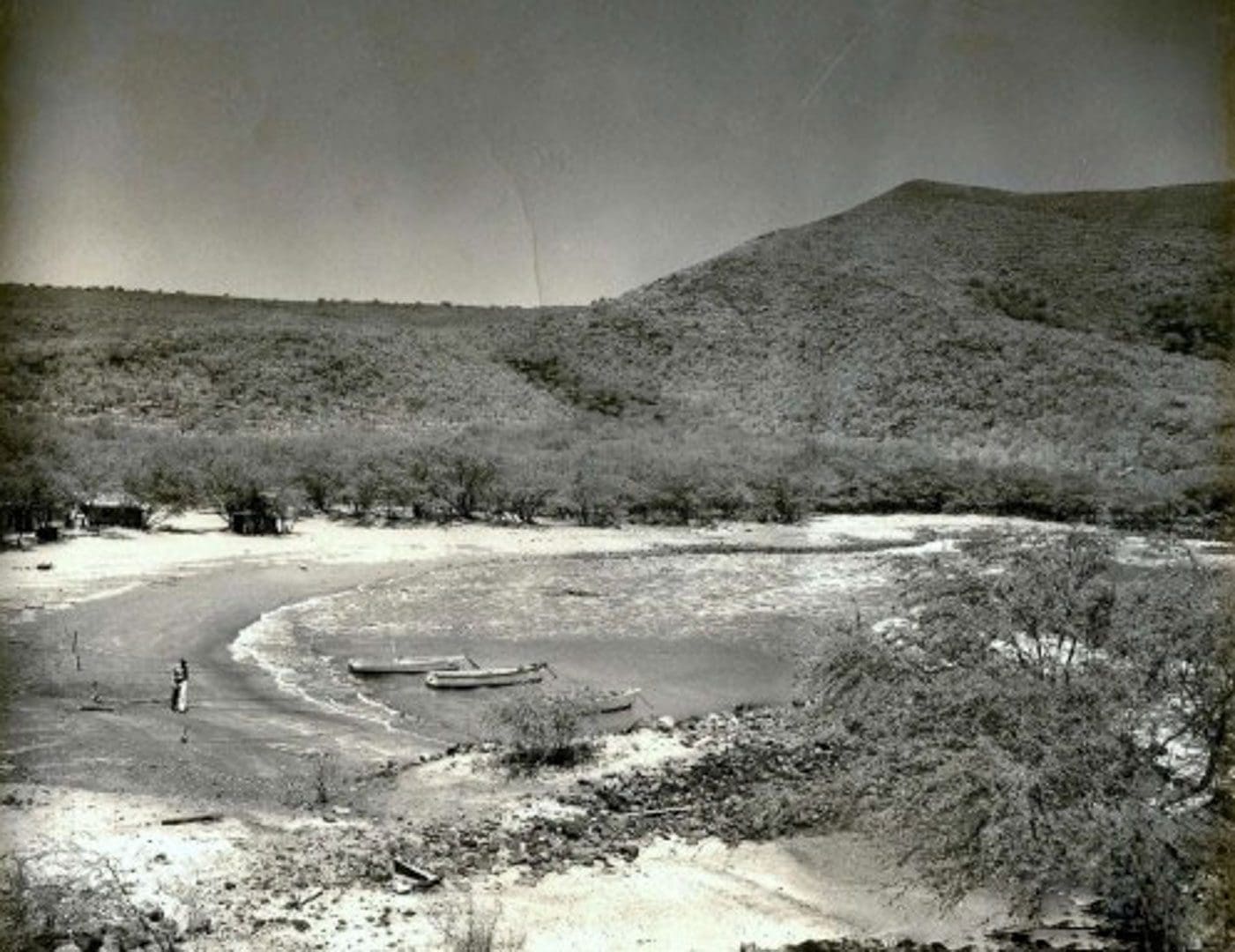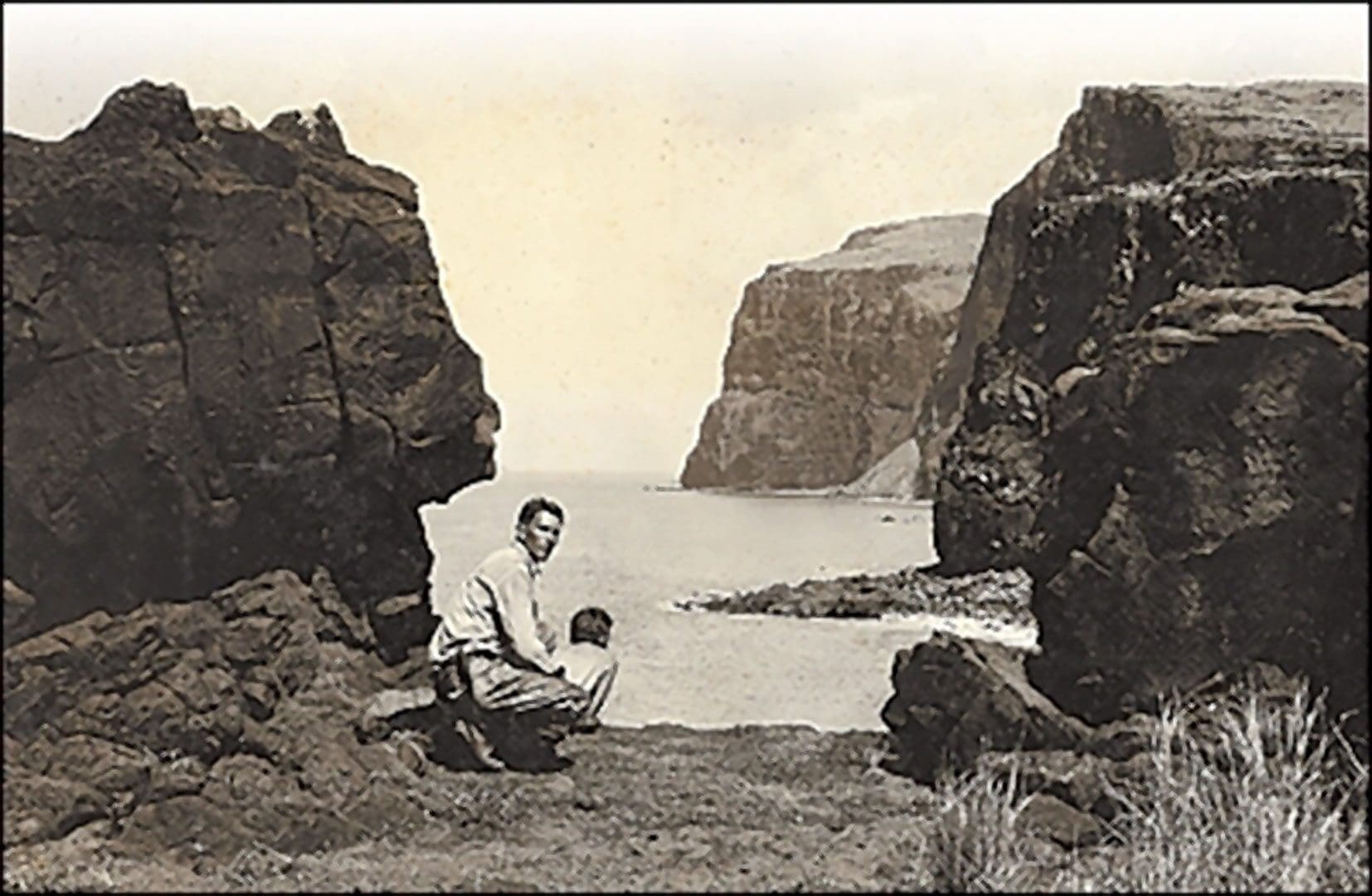Sense of Place
The best way to get to know Lāna‘i's unique sense of place is to visit! However, we hope that in some small way this page communicates a portion of that special sense of place and we look forward to welcoming you to our Island. Looking for more on Lāna‘i? Please check out the Resources Section at the bottom of this page.Lāna‘i Formed 1.5 Million Years Ago
%
At 140 Sq Miles, Lāna‘i is less than half the size of NYC.
Population 2010 Census
Part 1
PBS Hawaii – Long Story Short – Kepa Maly: Lana’i and the Spirit of Place – Part 1
Part 2
PBS Hawaii – Long Story Short – Kepa Maly: Lana’i and the Spirit of Place – Part 2
Aerial Video of Pu‘u Pehe
Hawaiian Folk Tales, by Thomas G. Thrum, 1907
THE TOMB OF PUUPEHE
A LEGEND OF LANAI
FROM “THE HAWAIIAN GAZETTE”
ONE of the interesting localities of tradition, famed in Hawaiian song and story of ancient days, is situate at the southwestern point of the island of Lanai, and known as the Kupapau o Puupehe, or Tomb of Puupehe. At the point indicated, on the leeward coast of the island, may be seen a huge block of red lava about eighty feet high and some sixty feet in diameter, standing out in the sea, and detached from the mainland some fifty fathoms, around which centres the following legend.
Next
Observed from the overhanging bluff that overlooks Puupehe, upon the summit of this block or elevated islet, would be noticed a small inclosure formed by a low stone wall. This is said to be the last resting-place of a Hawaiian girl whose body was buried there by her lover Makakehau, a warrior of Lanai.
Puupehe was the daughter of Uaua, a petty chief, one of the dependents of the king of Maui, and she was won by young Makakehau as the joint prize of love and war. These two are described in the Kanikau, or Lamentation, of Puupehe, as mutually captive,
Next
the one to the other. The maiden was a sweet flower of Hawaiian beauty. Her glossy brown, spotless body “shone like the clear sun rising out of Haleakala.” Her flowing, curly hair, bound by a wreath of lehua blossoms, streamed forth as she ran “like the surf crests scudding before the wind.” And the starry eyes of the beautiful daughter of Uaua blinded the young warrior, so that he was called Makakehau, or Misty Eyes.
The Hawaiian brave feared that the comeliness of his dear captive would cause her to be coveted by the chiefs of the land. His soul yearned to keep her all to himself. He said: “Let us go to the clear waters of Kalulu. There we will fish together for the kala and the aku, and there I will spear the turtle. I will hide you, my beloved, forever in the cave of Malauea. Or, we will dwell together in the great ravine of Palawai, where we will eat the young of the uwau bird, and we will bake them in ki leaf with the sweet pala fern root. The ohelo berries of the mountains will refresh my love. We will drink of the cool waters of Mauna-lei. I will thatch a hut in the thicket of Kaohai for our resting-place, and we shall love on till the stars die.”
The meles tell of their love in the Pulou ravine, where they caught the bright iiwi birds, and the scarlet apapani. Ah, what sweet joys in the banana groves of Waiakeakua, where the lovers saw naught so beautiful as themselves! But the “misty eyes” were soon to be made dim by weeping, and dimmer, till the drowning brine should close them forevermore.
Next
Makakehau left his love one day in the cave of Malauea while he went to the mountain spring to fill the water-gourds with sweet water. This cavern yawns at the base of the overhanging bluff that overtops the rock of Puupehe. The sea surges far within, but there is an inner space which the expert swimmer can reach, and where Puupehe had often rested and baked the honu, or sea turtle, for her absent lover.
This was the season for the kona, the terrific storm that comes up from the equator and hurls the ocean in increased volume upon the southern shores of the Hawaiian Islands. Makakehau beheld from the rock springs of Pulou the vanguard of a great kona,–scuds of rain and thick mist, rushing with a howling wind, across the valley of Palawai. He knew the storm would fill the cave with the sea and kill his love. He flung aside his calabashes of water and ran down the steep, then across the great valley and beyond its rim he rushed, through the buffetings of the storm, with an agonized heart, down the hill slope to the shore.
The sea was up indeed. The yeasty foam of mad surging waves whitened the shore. The thundering buffet of the charging billows chorused with the howl of the tempest. Ah! where should Misty Eyes find his love in this blinding storm? A rushing mountain of sea filled the mouth of Malauea, and the pent-up air hurled back the invading torrent with bubbling roar, blowing forth great streams of spray. This was a war of matter, a battle of the elements to thrill with pleasure the hearts of strong men. But with one’s
Next
love in the seething gulf of the whirlpool, what would be to him the sublime cataract? What, to see amid the boiling foam the upturned face, and the dear, tender body of one’s own and only poor dear love, all mangled? You might agonize on the brink; but Makakehau sprang into the dreadful pool and snatched his murdered bride from the jaws of an ocean grave.
The next day, fishermen heard the lamentation of Makakehau, and the women of the valley came down and wailed over Puupehe. They wrapped her in bright new kapa. They placed upon her garlands of the fragrant na-u (gardenia). They prepared her for burial, and were about to place her in the burial ground of Manele, but Makakehau prayed that he might be left alone one night more with his lost love. And he was left as he desired.
The next day no corpse nor weeping lover were to be I found, till after some search Makakehau was seen at work piling up stones on the top of the lone sea tower. The wondering people of Lanai looked on from the neighboring bluff, and some sailed around the base of the columnar rock in their canoes, still wondering, because they could see no way for him to ascend, for every face of the rock is perpendicular or overhanging. The old belief was, that some akua, kanekoa, or keawemauhili (deities), came at the cry of Makakehau and helped him with the dead girl to the top.
Next
When Makakehau had finished his labors of placing his lost love in her grave and placed the last stone upon it, he stretched out his arms and wailed for Puupehe, thus
Are you in the cave of Malauea?
Shall I bring you sweet water,
The water of the mountain?
Shall I bring the uwau,
The pala, and the ohelo?
Are you baking the honu
And the red sweet hala?
Shall I pound the kalo of Maui?
Shall we dip in the gourd together?
The bird and the fish are bitter,
And the mountain water is sour.
I shall drink it no more;
I shall drink with Aipuhi,
The great shark of Manele.”
Ceasing his sad wail, Makakehau leaped from the rock into the boiling surge at its base, where his body was crushed in the breakers. The people who beheld the sad scene secured the mangled corpse and buried it with respect in the kupapau of Manele.
Voices of Lāna‘i
This 14 minute oral history video of kūpuna on Lāna’i was produced by Anthony Ka’auamo Pacheco & Kepā Maly for the Lāna’i Culture & Heritage Center. This program introduces viewers to several Lāna’i Elders, and provides you with examples of the stories recorded in the Voices of Lāna’i a oral history program funded from contributions made during the 2009 Kealii Reichel concert.
Legend of Prince Kaululā’au of Maui – Modern Reenactment
A legend of Hawaii from the play
The legend of Prince Kaululā’au of Maui, who outwitted the evil spirits of Lana’i, adapted by Leslie Slape for the play “This Island Earth,” a collection of folk tales, myths and legends about humanity’s relationship with our planet. The play was written by Leslie Slape and Don Correll, directed by Correll, produced by Lower Columbia College, performed May 27-June 13, 2009, at LCC Center Stage Theatre, Rose Center for the Arts, Longview, WA. Copyright 1998/2009 Slape and Correll. (Some scenes, but not this one, originally appeared in the play “The Time Traveler’s Story Guide to Planet Earth,” produced in 1998 at Center Stage with the same writers and director.) Prince Ka’ulu: T.J. Wistrick. Evil sprits: Corey Farmer, Phillip Andrew Kennedy, Knichole Campbell, Carl Jansen. King: Derek Mesford. Queen/worker: Emily Soule. Thirsty breadfruit: Kylee Gano. Narrators: Knichole Campbell, Dylan Disch. Filmed at a pickup rehearsal June 3 (that’s Don’s voice you hear occasionally). Lighting: Don Correll. Set design: Michael Cheney.
Chief Kākaʻalaneo and Legend of Kaululā‘au
“Kākaʻalaneo was a high chief of the land at Kekaʻa (Maui’s capital circa 15th century). The chief reigned over a thriving community of many people, as his land was fertile and rich with groves of breadfruit, bananas, sugar cane, sweet potatoes, and taro. He and his wife had two children who were born here, their son Kaululā’au and daughter Wao.
The family kahuna (priest) predicted that Kaululā’au would be destructive, but that the lands would eventually be blessed by his strength and deeds. Kaululā’au would uproot young taro and sweet potato plants for fun. His father finally banished Kaululā’au to the island of Lānaʻi to live among the spirits there. Kaululā’au eventually rid the island of all the ghosts and later became the ruling chief of the island.”
Credit to Peter T. Young
http://totakeresponsibility.blogspot.com/2013/10/kaanapali-historical-trail-history-and.html
Keahiakawelo
Keahiakawelo
Keahiakawelo, also incorrectly known as Garden of the Gods, is an otherworldly rock garden on the Hawaiian island of Lanai. Its mysterious lunar topography is populated with boulders and rock towers. According to Hawaiian lore, this windswept landscape is the result of a contest between two kahuna (priests) from Lanai and Molokai. Each was challenged to keep a fire burning on their respective island longer than the other, and the winner’s island would be rewarded with great abundance.
Next
The Lanai kahuna, Kawelo, used every piece of vegetation in Keahiakawelo to keep his fire burning, which is why this area is so barren today. The rock towers, spires, and formations formed by centuries of erosion are at their most enchanting at dusk. The setting sun casts a warm orange glow on the rocks illuminating them in brilliant reds and purples. And on a clear day, visitors can see the islands of Molokai and Oahu from these high elevations. Visitors should be aware that Garden of the Gods is only accessible via 4-wheel drive vehicle. The removal or stacking of rocks is kapu (forbidden).
Resources
Lāna‘i Culture and Heritage Center
Celebrating the land, resources, people and history of Lāna‘i
E ho‘ohanohano ‘ana i ka wā ma mua, a e ho‘olako ‘ana i ka mua aku!
(Honoring the Past, Enriching the Future!)
The Lāna‘i Culture & Heritage Center in Lāna‘i City was established in 2007, and is a federally recognized 501c3 non-profit charitable organization. Our programs seek to inspire people to be informed, thoughtful and active stewards of Lāna‘i’s legacy landscape by preserving, interpreting and celebrating its natural history, Hawaiian traditions, diverse heritage and cultures, and ranching and plantation era histories.
Hawaii Tourism Authority
The Hawaii Tourism Authority’s Go Hawaii website has information on Lāna‘i.


